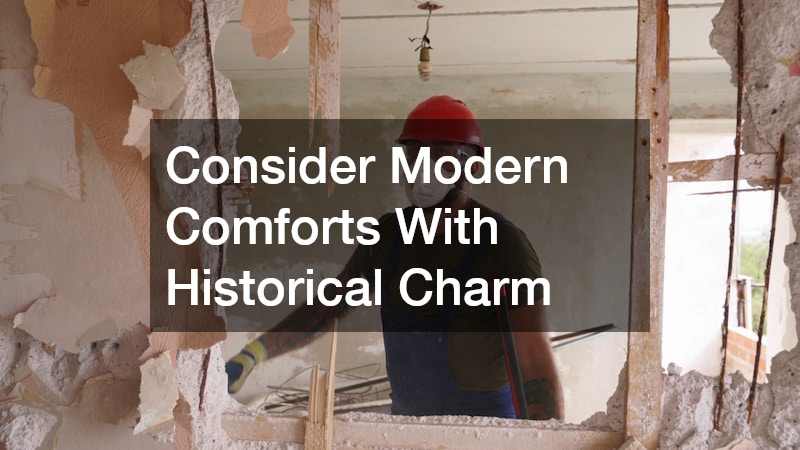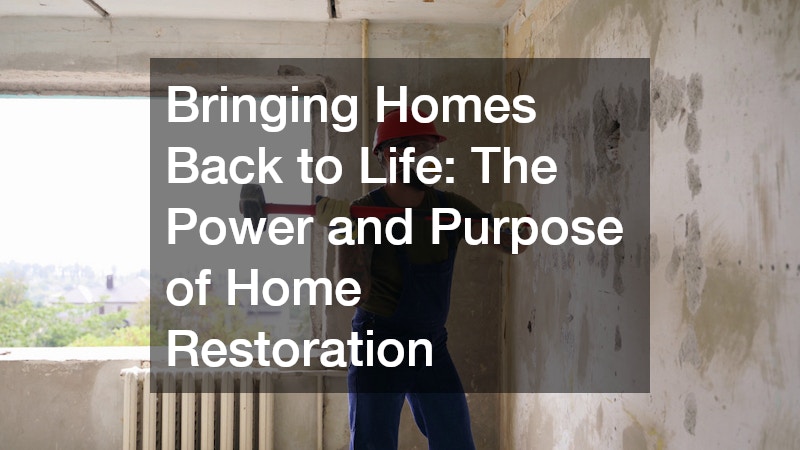Home is more than a structure—it’s where memories are made, traditions are passed down, and comfort is found in familiar walls. But over time, homes age. Paint peels, floors creak, and once-beautiful features begin to fade. That’s where home restoration comes into play. Unlike renovation, which often involves modernising or reimagining a space, restoration focuses on preserving and reviving the original character of a home.
It’s about honouring the past while breathing new life into cherished living spaces.
Understand the Purpose of Home Restoration
Home restoration is often pursued for emotional and historical reasons. For many homeowners, it’s about protecting the soul of a place—the trim work that tells stories of craftsmanship, the original hardwood that’s seen generations grow, or the fireplace that once warmed countless family gatherings. Restoring a home involves peeling back the layers of time to rediscover and reinforce its original beauty and function.
In historic districts or older neighbourhoods, home restoration can also serve a larger purpose. It helps preserve the architectural integrity of communities and maintain the cultural heritage that makes each neighbourhood unique. In this way, restoration isn’t just about the individual home—it’s about contributing to a broader tapestry of history and tradition.
Know the Key Elements of a Successful Restoration
A well-executed home restoration begins with understanding the era and style of the property. From Victorian and Colonial to Craftsman and Mid-century Modern, each architectural style comes with distinct details that require specialised attention. Identifying original materials, finishes, and features is crucial. Whether it’s crown moulding, antique fixtures, or original windows, these elements can often be restored or replicated to maintain authenticity.
Another key element is structural integrity. Before cosmetic work begins, professionals assess the foundation, framing, roofing, and major systems like plumbing and electrical. These aspects may require updates to ensure safety and functionality without compromising the home’s original appearance.
A detailed plan is essential. Restoration projects often uncover surprises—hidden damage, outdated wiring, or long-forgotten design quirks. Having a strategy in place allows for flexibility while ensuring the project stays true to its goals. Restoration experts use a combination of traditional techniques and modern technology to restore homes efficiently and precisely.
Focus on Original Materials and Craftsmanship
A true home restoration goes beyond aesthetics. It’s a commitment to craftsmanship and historical accuracy. Whenever possible, original materials are preserved or reused. For example, aged wood floors might be sanded and refinished rather than replaced. Original bricks can be cleaned and repointed rather than torn down. When components can’t be saved, experts strive to match replacements closely in style, colour, and texture.
This focus on authenticity can be deeply rewarding. Restoring handcrafted woodwork, original tile, or antique hardware brings depth and history to a space in ways that modern materials often cannot replicate. It’s a chance to honour the artisans of the past while making a space functional for contemporary living.
Consider Modern Comforts With Historical Charm
One of the most exciting challenges of home restoration is blending modern convenience with traditional charm. While the goal is to maintain the home’s historical essence, comfort is still a priority. Subtle updates—like adding insulation behind original plaster walls, installing energy-efficient windows that replicate historical designs, or discreetly upgrading HVAC systems—allow homeowners to enjoy the benefits of modern living without sacrificing character.
Kitchens and bathrooms often get special attention. These spaces can be updated with period-appropriate finishes, vintage-inspired fixtures, and thoughtful layouts that reflect today’s needs while remaining stylistically cohesive. This balance of old and new is what makes restored homes feel both timeless and livable.
Celebrate Sustainability Through Restoration
Home restoration is inherently sustainable. Rather than demolishing and rebuilding, restoration reuses what already exists. This reduces waste, preserves resources, and lowers the environmental impact of construction. By maintaining the original structure and materials, restoration minimises the need for new materials and energy-intensive processes.
Moreover, older homes were often built with durable, high-quality materials designed to last for decades, sometimes centuries. Restoring these materials not only conserves their beauty but also showcases the value of long-term craftsmanship and thoughtful construction.
Home restoration is more than just a project—it’s a journey through time. It’s about rediscovering the beauty, quality, and history built into every corner of your space. Whether your goal is to honour your home’s past, preserve its unique charm, or create a lasting legacy, restoration offers a powerful way to blend the best of tradition and modern life. By investing in home restoration, you not only improve your living environment but also keep a valuable piece of history alive for generations to come.




